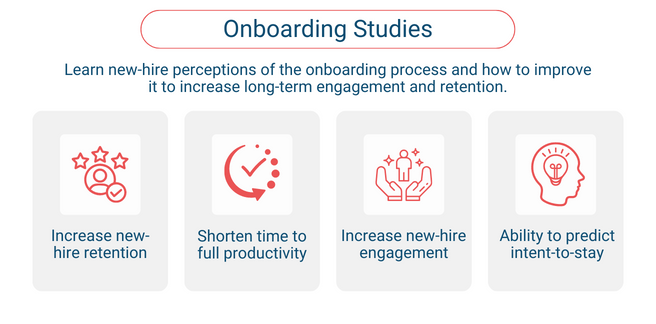It’s true, you don’t get a second chance to make a first impression. Yet, many organizations don’t put their best foot forward when onboarding new employees. Moreover, many organizations are in the dark and don’t understand how they can better influence new employees in way that encourages them to stay longer. Onboarding studies are designed to shed light on the onboarding process and identify specific strategies to help your organization make a good impression on new employees – that sticks – and that’s important.
Employee Onboarding Facts
The new employee experience is vital for the employee, as it sets the stage for his or her employment with the company. It is proven that effective onboarding leads to increased engagement and retention. However, it’s clear that many organizations are not seizing the moment with new hires. Less than half of companies in one survey, 48%, believe their onboarding is successful. This is evidenced by the fact that more than one-third of turnover, 34%, occurs within their first-year of employment.
What are Onboarding Studies
Onboarding studies, often referred to as new hire surveys, are tools through which leaders request feedback from new employees about the onboarding process, with the intent of using the information to improve the new employee experience. Specifically, onboarding studies help organizations understand what can be improved about the onboarding process to help new hires become more productive in their role and better assimilate to the organization.
What are the Objectives of an Onboarding Study?
Onboarding studies should assess the onboarding process and how effective that process is in assimilating new hires to the workplace conditions proven to drive engagement and retention.
The objectives of onboarding studies are to:
- Obtain feedback on the effectiveness of each stage of onboarding
- Uncover insights to improve each stage of onboarding
- Understand attitudes around workplace conditions that drive engagement and retention
- Evaluate the effectiveness of job training elements
- Communicate to employees that their feedback is valued
- Reveal potential compliance issues
Do you know what new hires think of your organization or if they plan to stay? Don’t get stuck in the dark. Use onboarding studies to capture feedback, improve the onboarding process and make a good impression on new hires – so they will stay and thrive.
References:
- Fynes, Jamie. 2017. “The Importance of Voice of Employee Across Employment Stages” Workplace Insights: Studies in Human Capital & Workforce Management. Volume 1, Issue 05.
- Keisling, B., & Laning, M. (2016). We are happy to be here: The onboarding experience in academic libraries. Journal of Library Administration, 56, 381-394. doi: 10.1080/01930826.2015.1105078
- Krasman, M. (2015). Three must-have onboarding elements for new and relocated employees. Employment Relations Today, 9-14. doi: 10.1002/ert
- Allied. (2012). Allied workforce mobility survey: Onboarding and retention. Retrieved from http://hriq.allied.com/pdfs/AlliedWorkforceMobilitySurvey.pdf
- Sears, Lindsay E. “2017 Retention Report: Trends, Reasons & Recommendations”, 2017, workinstitute.com/retentionreport.
- Sears, Lindsay E. and Fynes, Jamie “Work Institute Drivers Model: The Most Important Workplace Conditions for Engagement and Retention.” Workplace Insights, Vol 1. Issue 4 2017.
- Grillo, M., & Kim, H. K. (2015). A strategic approach to onboarding design: Surveys, materials, & diverse hires. Retrieved from Cornell University, ILR School site: http://digitalcommons.ilr.cornell.edu/student/79


